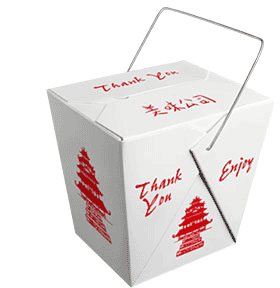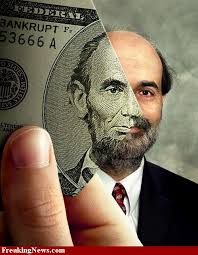November 1, 2011 · 9:48 am

Russia's Peter the Great, 1672 - 1725
Fun Facts About Dumb, Annoying, Crazy or otherwise Controversial TAXES
 Beard Tax
Beard Tax
To Shave or Not to Shave? Peter the Great taxed all (non-clergy) facial hair in 1705. As much as 90% of Peter the Great’s tax revenue used for military. (also taxed souls)
Facial Hair Tax
Massachusetts has a law on the books that makes it illegal to have a goatee without first purchasing a license to do so. A small fee must be paid in order to wear the facial hair in public, and one can be fined if a license is not presented to a law enforcement official upon request.
 Urine Tax
Urine Tax
Nero and Vespasian taxed collections from latrines. (used for textiles)
 Bribe Tax
Bribe Tax
According to Page 87 of the IRS code, “if you receive a bribe, [you must] include it in your income.”
 Salt Tax
Salt Tax
Worth your weight in salt. 1930 Ghandhi’s first steps toward Indian Independence.

Amusement Tax
In most states including Massachusetts and Virginia, is considered a tax on the patrons of places such as ski resorts, craft shows, and golf courses, but in reality is collected from the operators of such places. The government taxes the owners of places that offer “amusement” and in return those businesses pass the aforementioned taxes on to us.
 Fountain Soda Drink Tax
Fountain Soda Drink Tax
Illinois has on record a tax rate on fountain drinks of 9 percent, as opposed to the standard sales tax of 3 percent.
 Take-out Tax
Take-out Tax
Little did you know some areas levy a 0.5 percent tax on all take-out food. Chicago and Washington, D.C. both have enacted a tax on fast food, purportedly to pay for the removal of litter often accrued with the purchase of burgers and dogs. This tax applies to everything take-out, from your morning egg McMuffin to your late night cheese steak.
 Blueberry Tax
Blueberry Tax
In Maine, “anyone who grows, purchases, sells, handles, or processes the fruit in the state” makes those persons eligible for a ¾ cent per pound tax.
 Playing Card Tax
Playing Card Tax
Alabama has in place a 10 cent tax on the sale of all playing cards with 54 cards or less.
 Sparkler and Novelties Tax
Sparkler and Novelties Tax
West Virginia imposes a special fee on all businesses selling sparklers and other novelties. On top of the state’s 6 percent sales tax you can expect to pay an additional fee courtesy the state.
 Illegal Drug Tax
Illegal Drug Tax
11 states in the U.S., including North Carolina and Nevada, tax citizens on possession of illegal drugs. After acquiring an illegal substance in North Carolina you are supposed to go to the Department of Revenue and pay a tax on it. In exchange, you will receive a stamp to affix to your drug which serves as evidence that a tax was paid.
 Nudity Tax
Nudity Tax
In the State of Utah, taxpayers that own businesses where “nude or partially nude individuals perform any service” have to pay a 10% sales and use tax. It applies to all revenue from admission fees as well as the sales of merchandise, food, drink and services. These expenses are paid by the business owners who likely pass along the additional costs to their customers.
Special thanks to Huffington Post: A Dozen Dumb Taxes (from a compilation by Nick Sabloff)
Filed under Criminal Justice, Economics, Entertainment, Food, Historical Events & Figures, Nature, Travel
Tagged as accrued, acquiring, admission, affix, Alabama, Amusement, Beard, blueberries, Blueberry, books, bribe, burgers, business, business owners, businesses, card, cheese steak, Chicago, clergy, code, collections, costs, craft shows, customers, D.C., Department of Revenue, dogs, drink, drinks, drug, egg McMuffin, eligible, evidence, exchange, Facial Hair, fast food, fee, fine, fined, food, fountain, fountain drinks, Fountain Soda, fruit, Ghandhi, goatee, golf courses, government, grows, hair, handles, illegal, Illegal Drug, Illinois, impose, income, Independence, Indian, Indian Independence, individual, individuals, IRS, IRS code, latrines, law, law enforcement, levy, license, litter, Maine, Massachusetts, merchandise, military, Nero, Nevada, non-clergy, North Carolina, Novelties, nude, Nudity, operators, owners, paid, partially nude, Pay, percent, Peter the Great, playing, Playing Card, possession, processes, public, purchases, purchasing, purchasing a license, revenue, sales tax, Salt, sell, selling, sells, Service, shave, ski resorts, soda, Sparkler, stamp, state, substance, Take-out, take-out food, tax, tax rate, tax revenue, taxed, taxes, taxpayers, textiles, urine, Utah, Vespasian, Virginia, Washington, weight, West Virginia, Worth
September 15, 2011 · 9:51 am

Fun Facts About the U.S. Federal Reserve
- The Federal Reserve holds a monopoly on the issuance of currency in the USA. In essence, this is the power to borrow an infinite amount of money at 0%. The dollar bill in your pocket is a 0% loan to the Federal Reserve. The Federal Reserve then uses these 0% loans to purchase income-producing assets. Before 2008, the assets purchased were primarily Treasury debt, which is backed by the taxation power of the US Government. In other words, we are exchanging the property rights to our valuable assets (land, labor, entrepreneurship) for little slips of green paper to buy trinkets with. The government can then tax these valuable assets to pay for our excess. The more we spend, the more the Fed owns.
 If all money created is debt and counts as principal, where does the money come from to pay interest on this debt? It comes from the money that gets printed in the future. This is why inflation is a natural result of our current monetary system.
If all money created is debt and counts as principal, where does the money come from to pay interest on this debt? It comes from the money that gets printed in the future. This is why inflation is a natural result of our current monetary system.
- Prior the the Emergency Economic Stabilization Act/TARP Act of September 2008, commercial banks were required to hold 10% of deposits as reserves. This placed a limit on the potential amount of money creation at around 9x the original deposit. An obscure clause in the TARP Act changed the reserve requirement to 0%, immediately making the potential money supply infinite.
- The reason for the credit spread blowups of October/November 2008 was because in the same TARP Act the Fed was allowed to pay interest on deposits without publicly stating the interest rate. Before the TARP Act, there was around $20 billion deposited by commercial banks at the Fed. After the TARP Act, deposits immediately jumped 50x to $1 TRILLION. This resulted in a disappearance of demand for risky assets, which led to blowouts in credit spreads.
 As a result of various acts of Congress in 2008, the Federal Reserve now has the authority to buy all sorts of assets (commercial paper, corporate bonds, mortgage loans, etc.). A cynical person would say this essentially allows the Fed to seize all valuable assets in this country directly by exchanging fancy bits of green paper for them without having to go through the intermediate step of coercing the US Government into spending more money and taking on more debt.
As a result of various acts of Congress in 2008, the Federal Reserve now has the authority to buy all sorts of assets (commercial paper, corporate bonds, mortgage loans, etc.). A cynical person would say this essentially allows the Fed to seize all valuable assets in this country directly by exchanging fancy bits of green paper for them without having to go through the intermediate step of coercing the US Government into spending more money and taking on more debt.
- Much of the Fed’s activity is not made public because of the use of off-balance sheet vehicles.
- There is debate over the constitutionality of the Fed’s various awesome powers.
What does this all mean? This economic crisis will not become a depression. By employing the new tools of monetary policy that the Fed has created for itself (interest on reserves and direct asset purchases), the money supply can be jerked around as if on a string. Initially, this means we will soon experience another period of easy credit and unsustainable economic growth.
However, the end result of current policies is that the Fed will be powerless to stop the next economic crisis. Assuming no outside shocks (another big war, nuclear attack, etc.), the dollar will over time lose its status as the reserve currency, and we will experience a currency crisis followed by rampant inflation at some point down the road.
Special thanks to www.seekingalpha.com
Filed under Economics, Historical Events & Figures
Tagged as 12 regional Federal Reserve Banks, acts of Congress, America, asset, assets, authority, bank, banking, billion, blowouts, bond, bonds, borrow, commercial banks, commercial paper, Congress, constitutionality, corporate bonds, country, credit, credit spread, credit spreads, currency, currency crisis, debate, debt, demand, deposit, deposits, direct asset purchases, dollar, dollar bill, economic, economic crisis, economic growth, economy, Emergency Economic Stabilization Act, excess, Fed, Federal Reserve Bank, foreign banks, future, government, green, inflation, interest, interest on reserves, issuance of currency, loan, loans, monetary, monetary policy, monetary system, money, money supply, monopoly, mortgage, mortgage loans, mortgages, nuclear attack, off-balance, off-balance sheet, off-balance sheet vehicle, paper, policy, power, powerless, powers, principal, print, printed, private institution, property rights, purchase, purchased, rampant inflation, regional banks, reserve, reserve currency, reserves, risky assets, Rockerfeller, Rockerfellers, Rothschild, Rothschilds, sieze, spend, spending, TARP Act, tax, taxation, taxation power, the Fed, Treasury, Treasury debt, trillion, U.S., U.S. Federal Reserve, U.S. Federal Reserve System, United States, United States Federal Reserve, unsustainable economic growth, US Government, USA, valuable, valuable assets, value, War
 Beard Tax
Beard Tax Urine Tax
Urine Tax Bribe Tax
Bribe Tax Salt Tax
Salt Tax Fountain Soda Drink Tax
Fountain Soda Drink Tax Take-out Tax
Take-out Tax Blueberry Tax
Blueberry Tax Playing Card Tax
Playing Card Tax Sparkler and Novelties Tax
Sparkler and Novelties Tax Illegal Drug Tax
Illegal Drug Tax Nudity Tax
Nudity Tax








 The Mind of Adam J. Kovitz
The Mind of Adam J. Kovitz